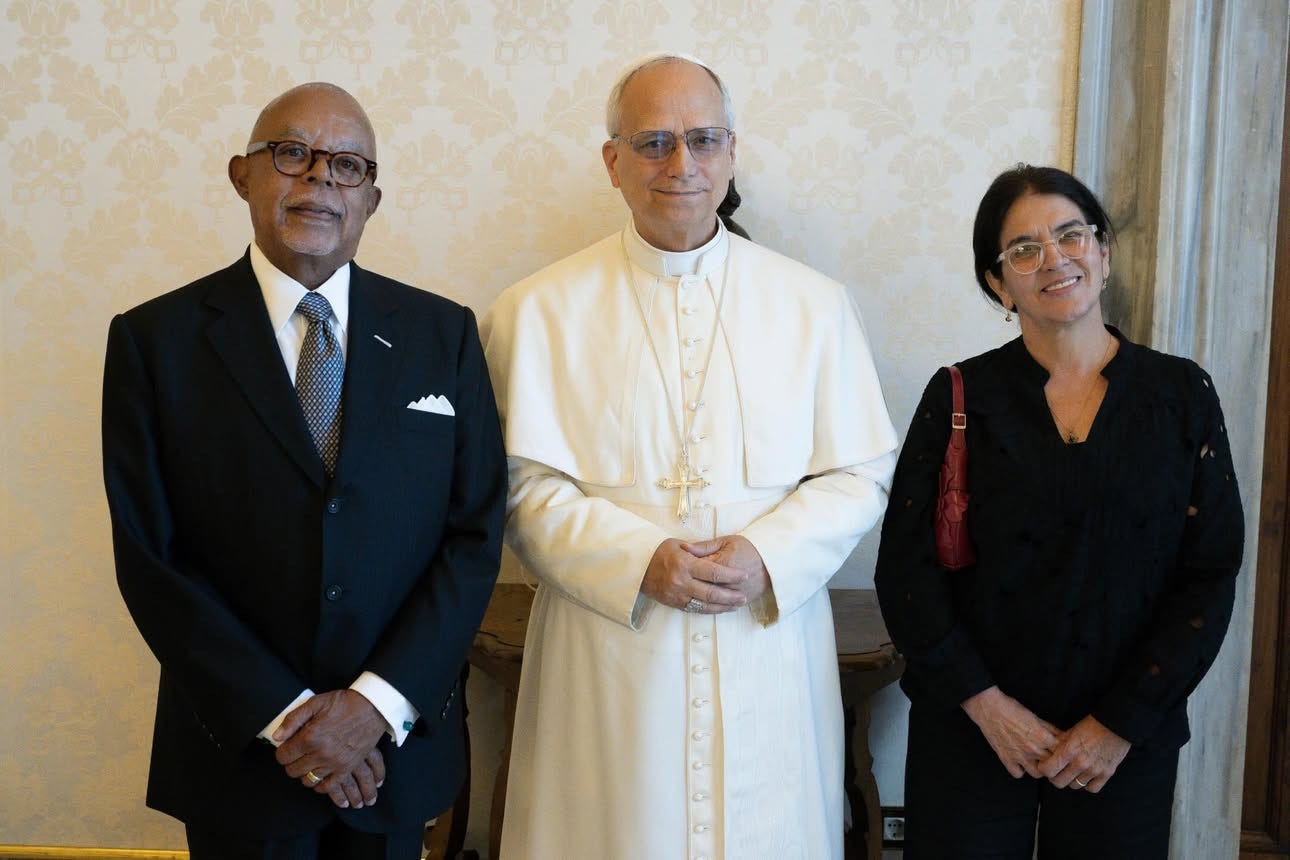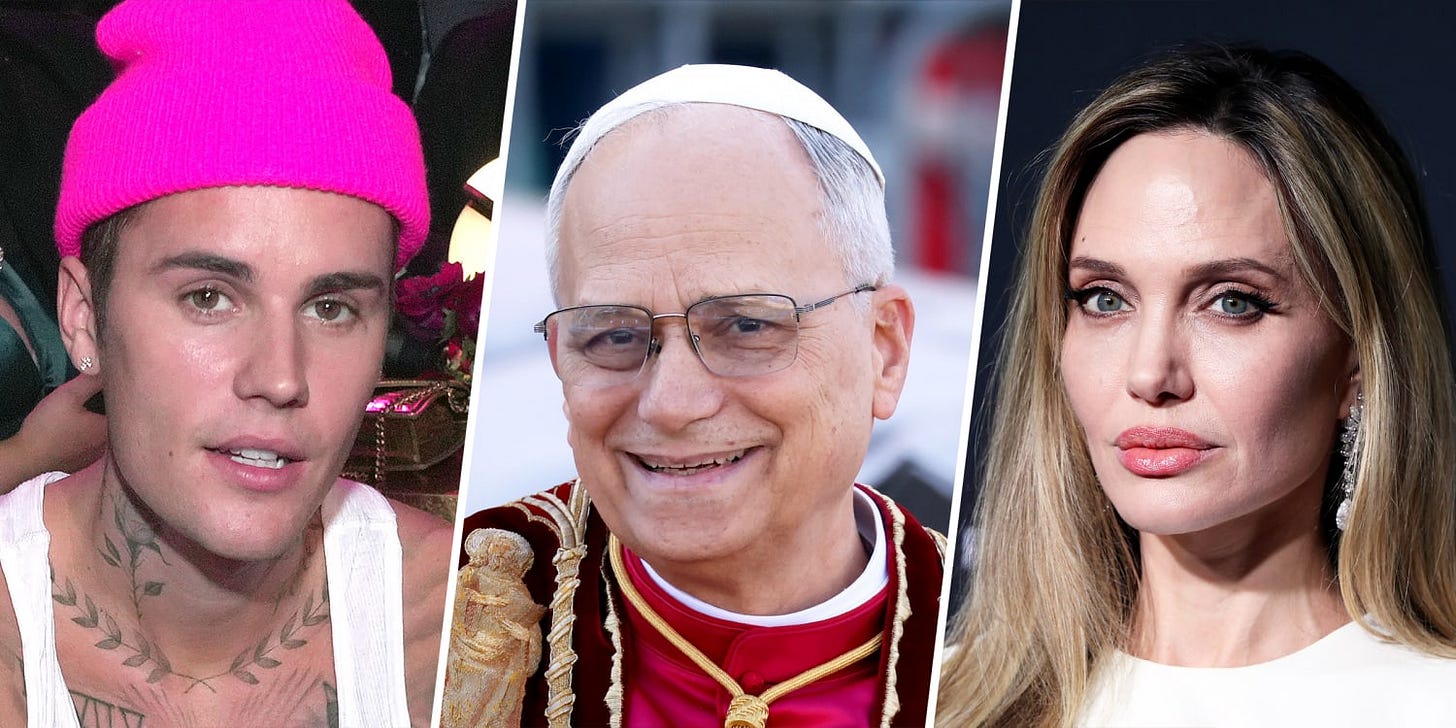NEW: The Pope’s Black Roots: What Henry Louis Gates Just Told Leo
The new American pope just learned his family tree includes black ancestors, slaveholders — both white and black — and a few celebrities.

I want to thank you so much for reading this reader-supported publication. We are 100% sustained by your generosity. If you find value in my work, please consider supporting me by becoming a paid subscriber today.
Paid subscriptions start at only $6.67 per month and will get you full access to this multi-part series on life and formation of Pope Leo.
This past Saturday in Rome, Harvard professor and PBS host Henry Louis Gates Jr. met with Pope Leo XIV — born Robert Francis Prevost — to hand-deliver the results of a sweeping genealogical report.
The contents? A deeply complex and, at times, uncomfortable account of the pope’s ancestral past.
At the heart of Gates’s findings is this: Pope Leo is part black.
His family lineage includes at least 17 Afro‑Creole ancestors — free people of color who lived in Louisiana before the Civil War, many of them described in historical records as “mulatto,” “quadroon,” or “free colored.”
But the story doesn’t stop there.
Among Leo’s ancestors were both enslaved people and enslavers.
Shockingly, eight of the 12 identified slaveholders in his lineage were black —including one woman, Marie Jeanne, who had herself been enslaved and later acquired over 1,000 acres and multiple enslaved people.
There’s no simple moral frame to hang this on, and Gates didn’t try to give him one.
Instead, he presented Pope Leo with something rare: an unvarnished, data-driven account of how the legacy of slavery, migration, race, and faith are bound up even in the life of the pope.
“This is the story of the Americas,” Gates said. “It’s messy, complicated, and deeply human.”
The surprises didn’t end there.
Leo’s French-Canadian ancestry also ties him to a strange mix of modern celebrities and public figures: Madonna, Justin Bieber, Hillary Clinton, Angelina Jolie, and Justin Trudeau among them.
But the tabloid-ready connections aren’t the point.
The real story is that the pope’s background — like so many Americans’ — is a mosaic of contradiction: privilege and persecution, oppression and resilience, Catholic piety and human failings.
Leo’s fourth-great-grandfather, François Lemelle, was a white enslaver who owned at least 20 people.
Several other ancestors, white and black, appear in Louisiana slave schedules and property records.
This is not the legacy we typically associate with the papacy — and that’s exactly what makes it important.
Pope Leo, the first American pope, is a product of that history.
And instead of distancing himself from it, he welcomed it.
Sources close to Leo told me he received Gates’s report with openness and gratitude and plans to read it during his two-week vacation in Castel Gandolfo.
In a Church that’s historically struggled with transparency about its past, its politics, and its people, this kind of reckoning stands out.
It’s not virtue-signaling. It’s history.
And Leo seems ready to carry it.
To explore the full scope of Professor Gates’s research into Pope Leo’s ancestry, here’s a gift link to his landmark June 11 feature in The New York Times Magazine.
I want to thank you so much for reading this reader-supported publication. We are 100% sustained by your generosity. If you find value in my work, please consider supporting me by becoming a paid subscriber today.
Paid subscriptions start at only $6.67 per month and will get you full access to this multi-part series on life and formation of Pope Leo.





I am not Catholic but love how Pope Leo represents all that Christ called his followers to be. Loving, embracing and accepting of all humanity. Yet speaking truth to power.
Thanks for gifting the article!